DEVON AND CORNWALL POLICE ARCHIVE
Police Project Archivist, Andrew Veal-Cox, from the Devon Heritage Centre talks about the archival collection relating to Devon and Cornwall Police that is available to search on the Devon Archives Catalogue.
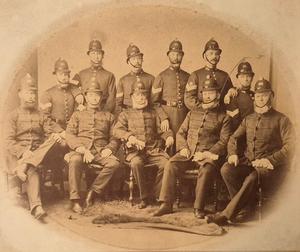
Exeter City Police, circa 1880s (PA/3/3/1/11)
Museum of Policing in Devon & Cornwall
The Devon Heritage Centre in Exeter has been fortunate to have held the archive of the Museum of Policing in Devon & Cornwall (MOPIDAC) since 2018. In essence, we hold the paper records, the volumes, documents and photographs that tell the story of policing in Devon and Cornwall over two centuries.
It is a collection that has been developed over fifty years and initially started within the force itself by individual officers who realised that the history of the force should be preserved. From there it evolved through huge efforts by volunteers into the independent charity MOPIDAC that is now part-funded by the Office of the Police and Crime Commissioner (OPCC).
In addition to the archival records held in the Devon Heritage Centre there is a substantial objects collection managed by a Curator at Okehampton Police Station. In March 2024, a part time mini-museum was opened within Tavistock’s Heritage Quarter so that displays and material from the collections can be accessed and enjoyed by the public.
A History of British Policing
The development of policing in Devon and Cornwall has very much mirrored that of policing across the rest of the country.
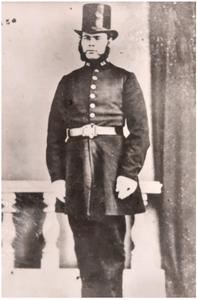
PC Julian, circa 1860 (PA/3/2/4/77)
During much of the period from the 14th to the 18th centuries, Parish Constables were the main up-holders of the law. A single constable was normally appointed or elected for each parish. The post was unpaid and they were obliged to serve for a year. In larger towns and cities Night Watchmen patrolled and guarded the city gates.
In 1748 Henry Fielding was appointed Justice of the Peace for Westminster and set up his court at Bow Street. He appointed a team of former Parish Constables who eventually became known as the Bow Street Runners. These Runners were deployed across the country and remained in existence until 1839.
In 1829 the Home Secretary, Sir Robert Peel, passed the first Metropolitan Police Act. This resulted in the formation of the Metropolitan Police Force who became known as “Peelers”. They were the first uniformed and paid constabulary in the country and answered directly to the Home Secretary.
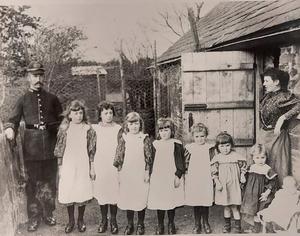
PC Cousins and family at Halwill, circa 1897 (PA/3/2/3/5)
With the passing of the Municipal Corporations Act in 1835 new boroughs were formed across the country, each one required to appoint a ‘Watch Committee’ responsible for maintaining a police force along the lines of the Metropolitan Police. Among the approximately two dozen Borough forces formed in Devon and Cornwall were those in Launceston, Okehampton, Falmouth and Exeter City.
The County Police Act of 1839 required county-wide Police Forces to be established, although many areas continued to rely on their Borough Constabularies until the passing of the County & Borough Act in 1856. It was at this point that both Cornwall County Constabulary and Devon County Constabulary were created. The Police Act 1946 abolished the few remaining Borough police forces such as Penzance and the Isles of Scilly.
The 1964 Police Act introduced further reforms and resulted in the last great amalgamation of forces across Britain with the formation of a combined Devon and Cornwall Constabulary in 1967.
Making Use of the Police Archive for Historical Research
In the seven years since the Police Archive arrived at the Devon Heritage Centre several archivists and a group of enthusiastic volunteers have worked hard to organise and catalogue the collection in line with recognised archival standards to maximise public accessibility via the online Devon Archives catalogue. To give readers an idea of the size of the challenge undertaken, the collection presently takes up seven runs of shelving which contain over 930 boxes and 52 shelves of bound volumes!
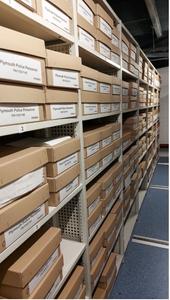
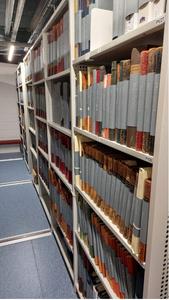
Just two of the runs of shelving that hold the collection.
When it comes to the records of most use to family history researchers, the place we usually start is the constabulary nominal rolls which run from the 1850s onwards. These are quite literally volumes which list officers by collar number, name, date of appointment, rank, physical description, marital status, former service, place of birth, nationality, religion, former trade or occupation, details of any promotions and their date of leaving. While the majority of named individuals are not searchable in the catalogue, we do have the names transcribed onto spreadsheets that allow us to conduct quick searches in response to researcher’s queries.
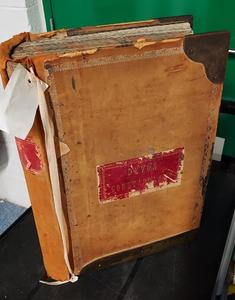
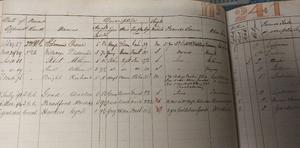
Devon Constabulary Nominal Roll (PA/1/5/1/4/1)
Another good source of information is the Devon Constabulary Benefit Benevolent Society Book (a type of National Insurance scheme for officers) which lists details of an officer’s membership including the date of joining the society and the names of their wives and children with dates of birth. This often proves invaluable because it allows researchers to cross reference their findings with census data.
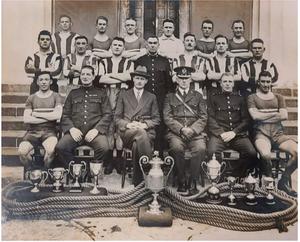

Other records of potential interest to family history researchers include personnel files, conduct books and of course photographs. Among the subjects covered by the many thousands of images are social activities, police vehicles, sports, special occasions, ceremonies, personnel, groups, buildings, Royal visits, major incidents and police animals, among many others.
At this point it is worth noting that any material less than 100 years old with named individuals is likely to be closed to the public. However, depending on what information you require we may still be able to help so it is always worth asking.
Another highlight of the collection are the 48 memoranda volumes that cover the period 1899 to 1967, these resemble scrap books kept by successive Devon Chief Constables in which copies of correspondence and memos have been pasted that cover every topic imaginable from police helmet fittings to stepping up patrols near churches due to increased robberies.
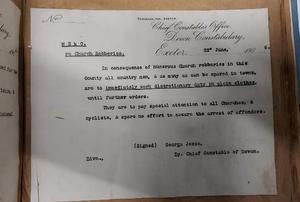
Chief Constable’s Memoranda Volumes (PA/1/6/3/1)
Among numerous other records of interest for historical research are general orders, Beat Books, officer’s pocket books, building plans and circulars. Other material covers both World Wars, civil defence, uniforms, women in policing, criminal investigations, licensing, Watch Committees and police authority minutes and much more, all of it containing stories waiting to be discovered.
So, if you have an enquiry, don’t hesitate to drop us a line with as much information as possible and we’ll do all we can to help.
The collection can be viewed on the Devon Archive Catalogue.
Links
https://www.dcpolicingmuseum.co.uk/
https://dcpolicingmuseum-archive.cortes.websds.net/TermsAndConditions.aspx
https://swheritage.org.uk/devon-archives/
Contact
devonarchives@swheritage.org.uk
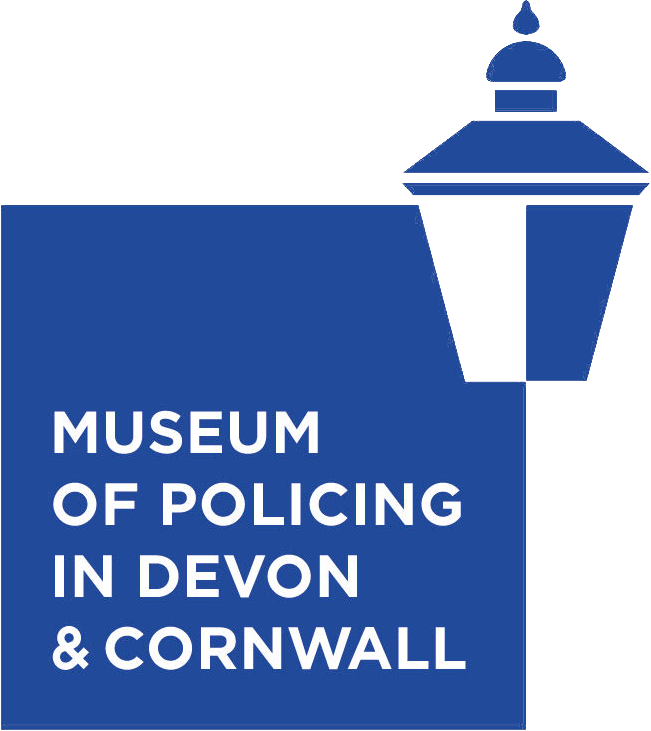
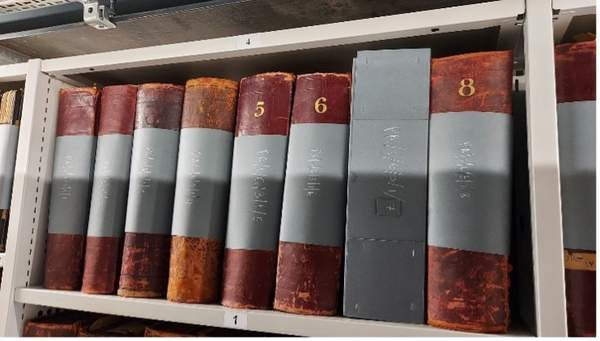
Post your own comment